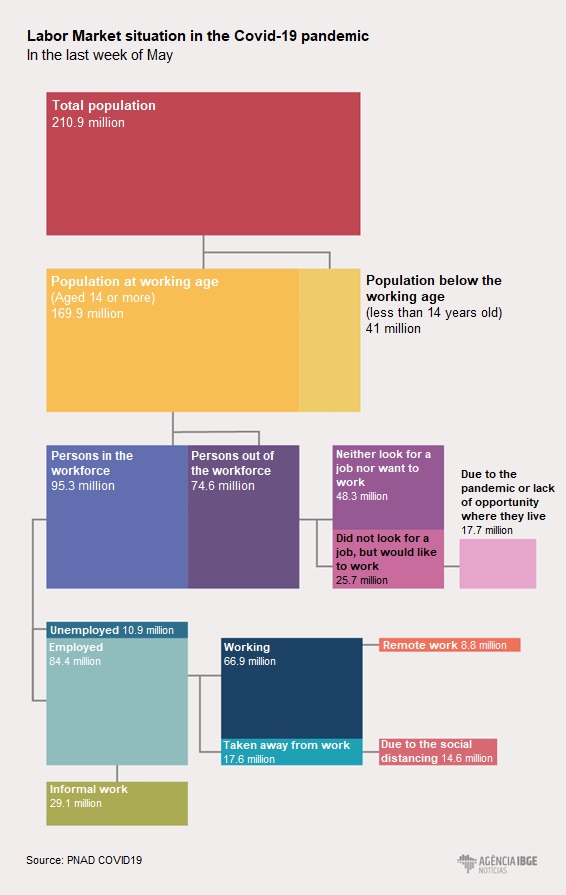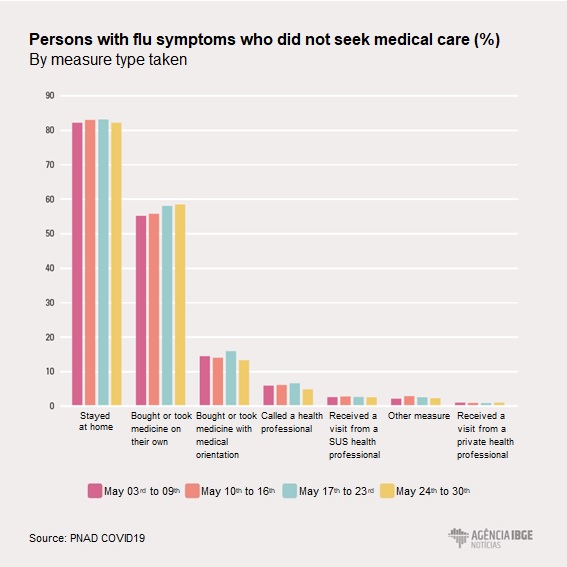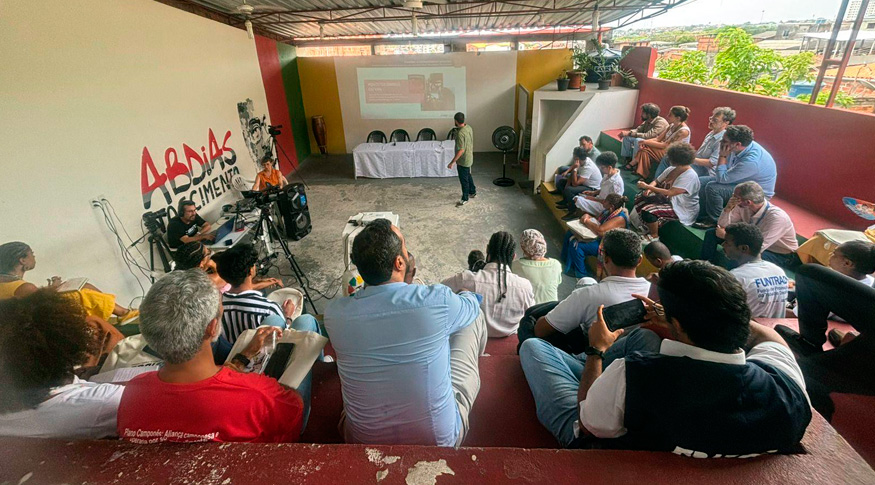PNAD COVID19
Pandemic hinders access of 28.6 million people to the labor market in May
June 16, 2020 02h00 PM | Last Updated: June 19, 2020 10h39 AM

Almost 18 million persons were unable to look for a job due to the pandemic – Photo: Tânia Rego/Brasil Agency
About 17.7 million persons were unable to look for a job in the last week of May due to the Covid-19 pandemic or because of the lack of opportunity in the region where they live. In the same period, another 10.9 million were unemployed and sought for an occupation, however, they could not find one. As a result, the country reached the mark of 28.6 million persons who wanted a job, but faced difficulties to enter the labor market, either due to the lack of vacancies or fear of catching the new coronavirus.
The data are the first results of PNAD COVID-19, released today (16) by the IBGE. The survey is a version of the Continuous National Household Sample Survey (Continuous PNAD), held with support from the Ministry of Health, to identify the impacts of the pandemic in the labor market and to quantify people with symptoms associated with the flu syndrome.
In May, the IBGE estimates that 84.4 million persons were employed in the country, though 169.9 million were at working age. It means that less than half of people (49.7%) were employed last month.
The survey also shows that the country amounted 29.1 million informal workers, who are employees of the private sector without a formal contract; domestic workers without a formal contract; employees who do not contribute to the INSS; self-employed people who do not contribute to the INSS; and unpaid employees that help a household resident or a relative.
This contingent, however, dropped over the month. In the first week of May, the informality rate was 35.7%. In the fourth week, it decreased to 34.5%, with a reduction of 870 thousand informal jobs in relation to the beginning of the month.
“Informality functions as a cushioning mattress for people who go to unemployment or to underutilization. Informal work would be a way to recover the employment, consequently, we cannot say that this drop is positive”, says the IBGE’s associate director of Surveys, Cimar Azeredo, adding that it is necessary to wait for the next results to analyze with more accuracy the impact of the pandemic in this group.

Among the 74.6 million persons who were out of the workforce (who were neither working nor looking for a job) in the last week of May, 23.7% would like to work, but did not look for a job due to the pandemic or lack of opportunity where they live.
Among the 84.4 million employed people in the last week of the month, 14.6 million were temporarily taken away from work (in quarantine or collective vacations) due to the social isolation, which represented 17.2% of the total number of employed people. From the first to the fourth week of May, the number of workers taken away fell by approximately 2 million.
Still among the employed people, the PNAD COVID19 shows that 8.8 million worked remotely in the last week of May. It represents 13.2% of the employed population and not taken away from work due to the pandemic. In the first week, this number was 8.6 million persons working from home or in the teleworking regime.
In May, 3.6 million people with flu symptoms sought the health network
PNAD COVID19 also shows that in the fourth week of May, 3.6 million persons with flu symptoms sought medical care in public and private health establishments in the country. More than 80% of these attendances were in the public health network.
From the total that sought assistance, 1.1 million went to hospitals and 127 thousand were hospitalized. However, 22.1 million persons reported at least one of the 12 symptoms that are common in many flus and that can occur in the Covid-19.
Among the 3.6 million who sought assistance, and they may have sought more than one type of establishment, 43.6% went to health centers, Basic Health Units (USBs) or Family Health Teams; 23.4% to SUS medical centers or Emergency Care Units and 17.3% to SUS hospitals. In the private network, the demand was of 9.4% in private ambulatories or offices; 12.8% in private hospitals; and 3.6% in private medical centers. The survey observed that during May there was an increase from 94 thousand to 127 thousand in the number of hospitalizations.

The most frequent symptom, according to PNAD COVID19, was headache, reported by 10.2 million, followed by runny or stuffy nose, 8.3 million complaints, cough, estimated at 6.5 million, and muscle pain, reported by 5.9 million persons. Sore throat (5 million), fever (4.8 million), loss of smell or taste (3.7 million), fatigue (3.3 million) and difficulty to breathe (2.9 million) were other symptoms of the flu collected by the survey.
Isolation may have contributed to decrease the number of persons with symptoms
The results of the survey show that between the first and fourth week of May, the number of people that reported flu symptoms decreased from 26.8 million to 22.1 million, as well as the frequency of all symptoms in this period.
According to the coordinator of Labor and Income, Maria Lucia Vieira, it is possible that this decrease is an effect of social distancing.
“The isolation measures have helped people to not become infected, because they are at their homes. For example, those who have children know that they catch flu at the daycare center and at school, which does not happen with the suspension of activities”, explained Vieira.
Almost 60% of persons with symptoms, who did not seek medical care, self-medicated
PNAD COVID19 also showed that 83.5% of persons with flu symptoms did not seek any assistance or health establishment. Among the 18.4 million persons who, despite having some symptoms, did not seek health establishments, in the week of May 24th to 30th, 82.4% said that they had stayed at home; 58.6% took medicine on their own; 13.3% took medicine with medical orientation; 4.8% called a health professional; and 2.4% received a visit from a SUS health professional.
“When we get a longer series, with results of symptoms and medical care by sex and age group, including information by state, a better mapping will be possible. In addition, the survey will help to understand the sectors of the labor market that are more affected and that can be favored by public policies”, highlighted Vieira.

PNAD COVID19
The interviews started on May 4th, and are being done, exclusively, by telephone, due to social distancing. Nearly two thousand agents of the Institute are calling 193,6 thousand households distributed in 3,364 municipalities in all states of the country. To define the sample of the new survey, the IBGE used as a basis the 211 thousand households that participated in the Continuous PNAD in the first quarter of 2019 and selected those with a registered phone number.
In May, more than 48 thousand interviews were realized per week. The interviews last nearly 10 minutes and residents that receive the call can confirm the collection agents’ identity by the Answering to the IBGE website or by calling 0800 721 8181, and inform the register, ID card or insurance number of the interviewer.
The data released today correspond to the four weeks of May, however the next releases will be for each reference week. Monthly, the IBGE will release survey results by Major Regions and Federation Units, age and sex, among other more detailed indicators of remote work and people taken away from work.
The collection is expected to happen until one month after the end of the social distancing measures.




















